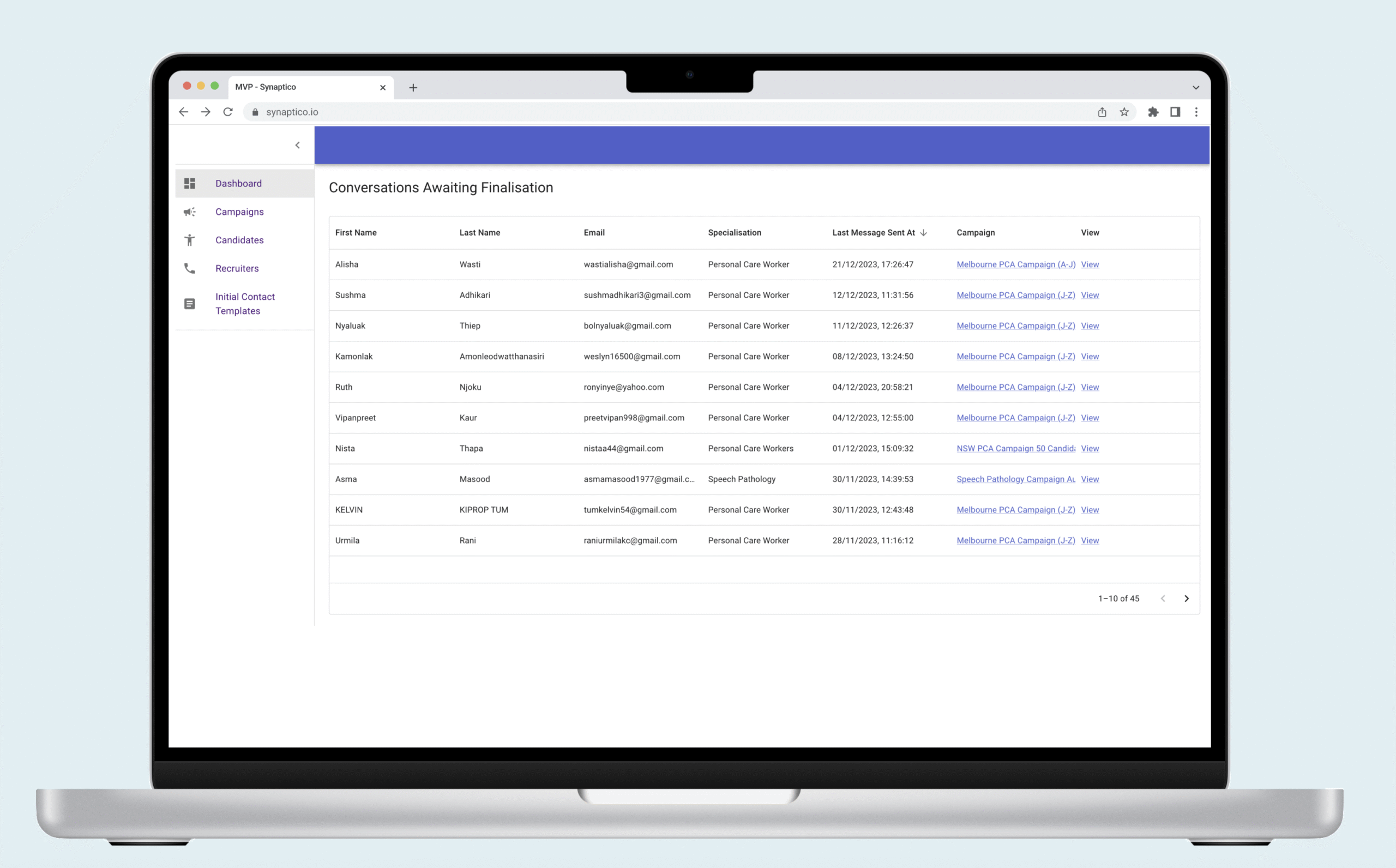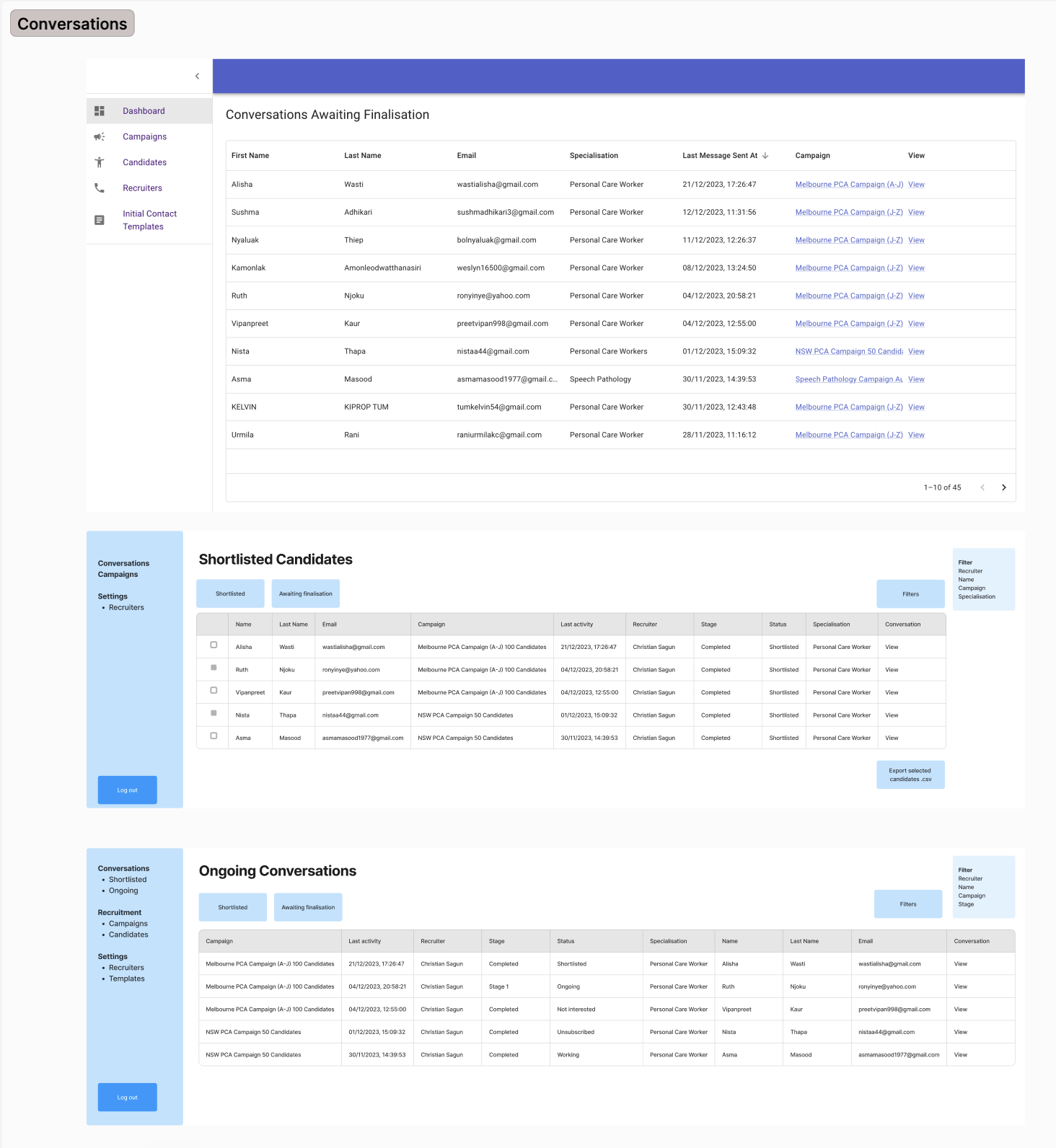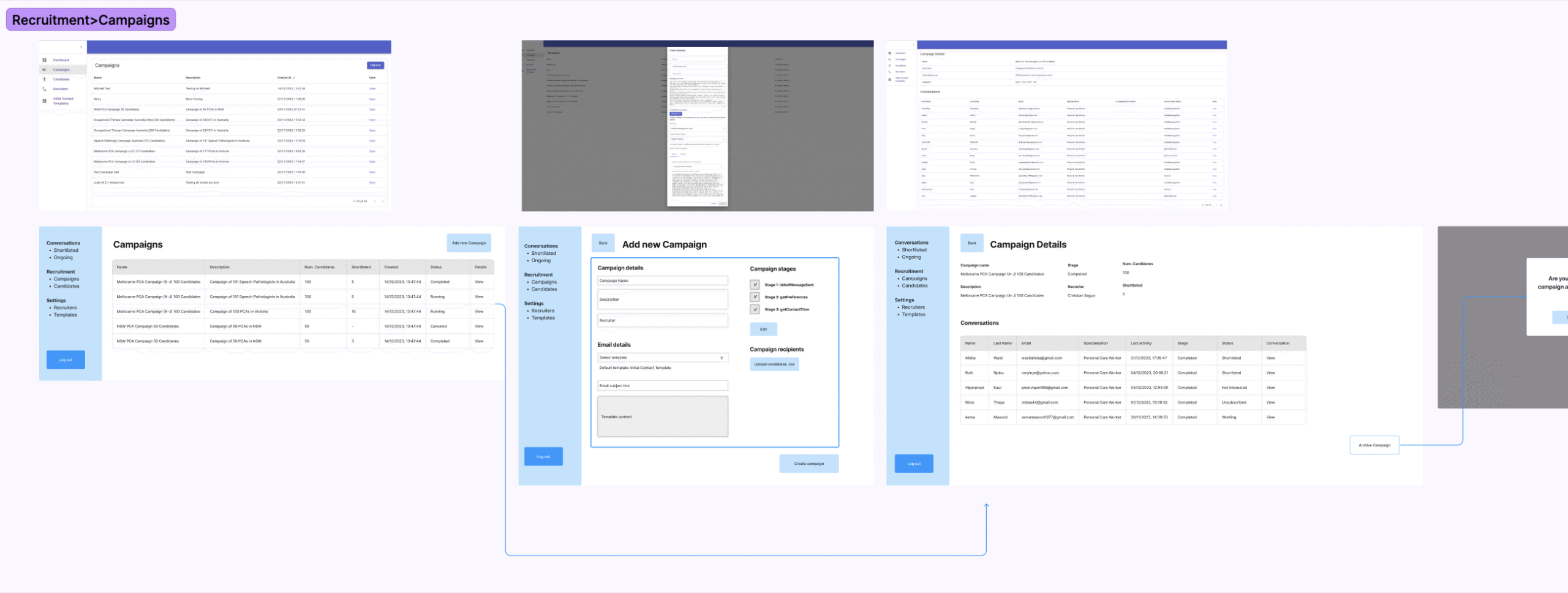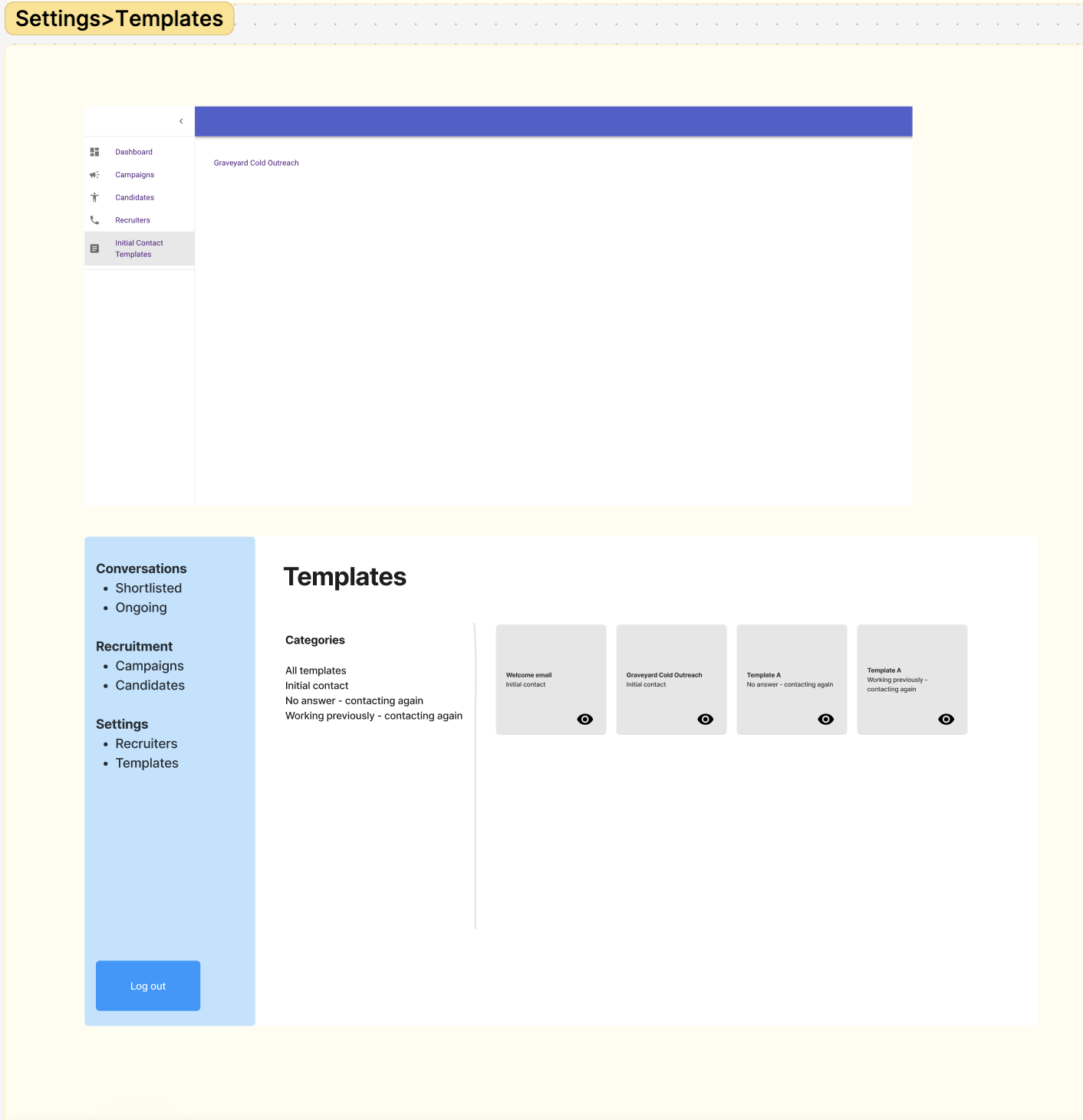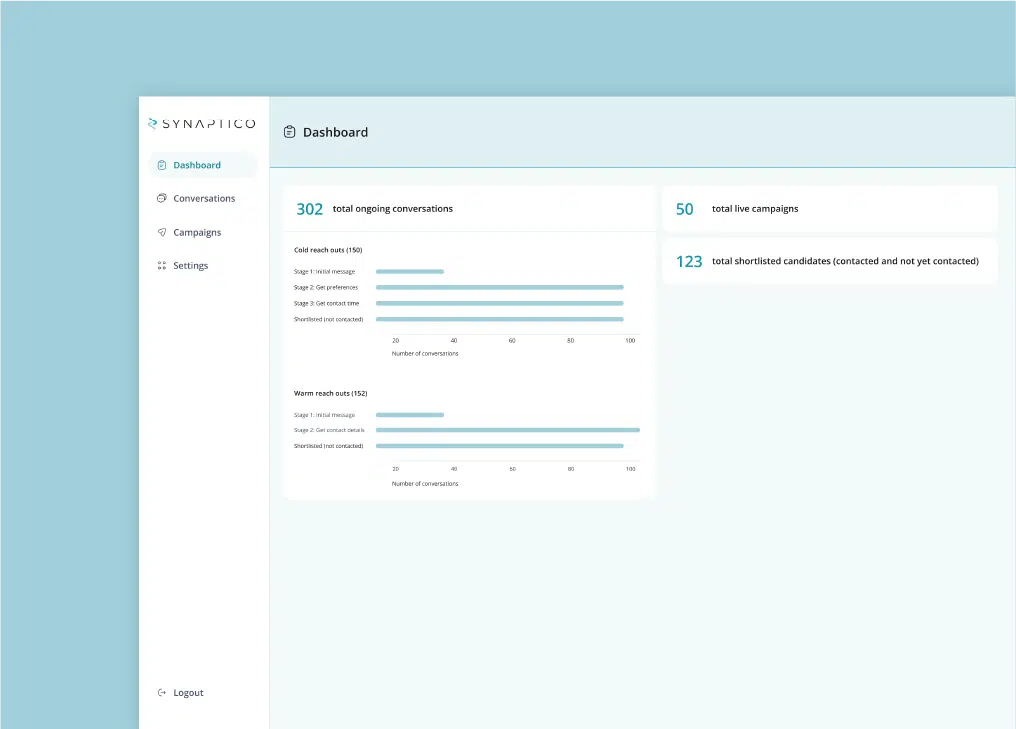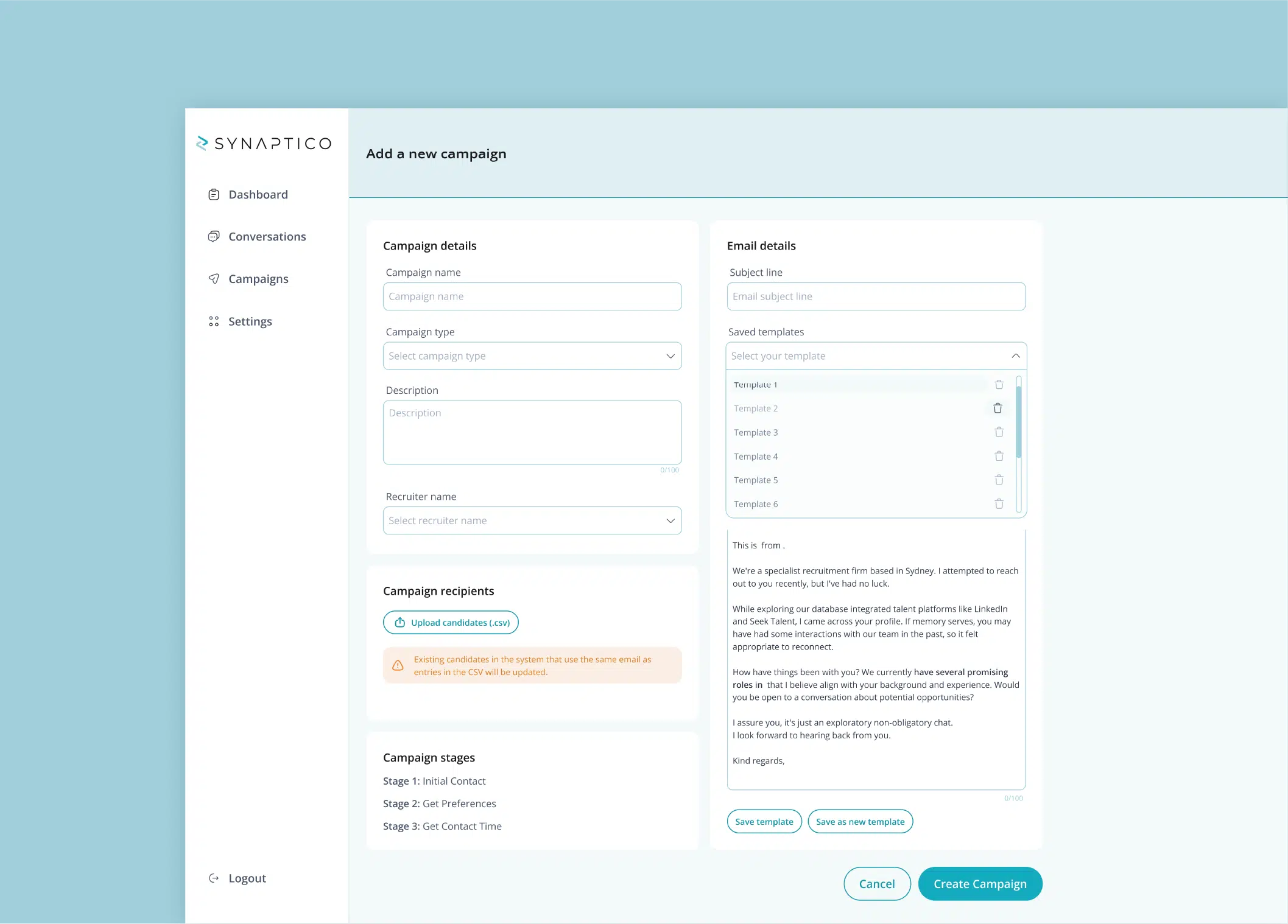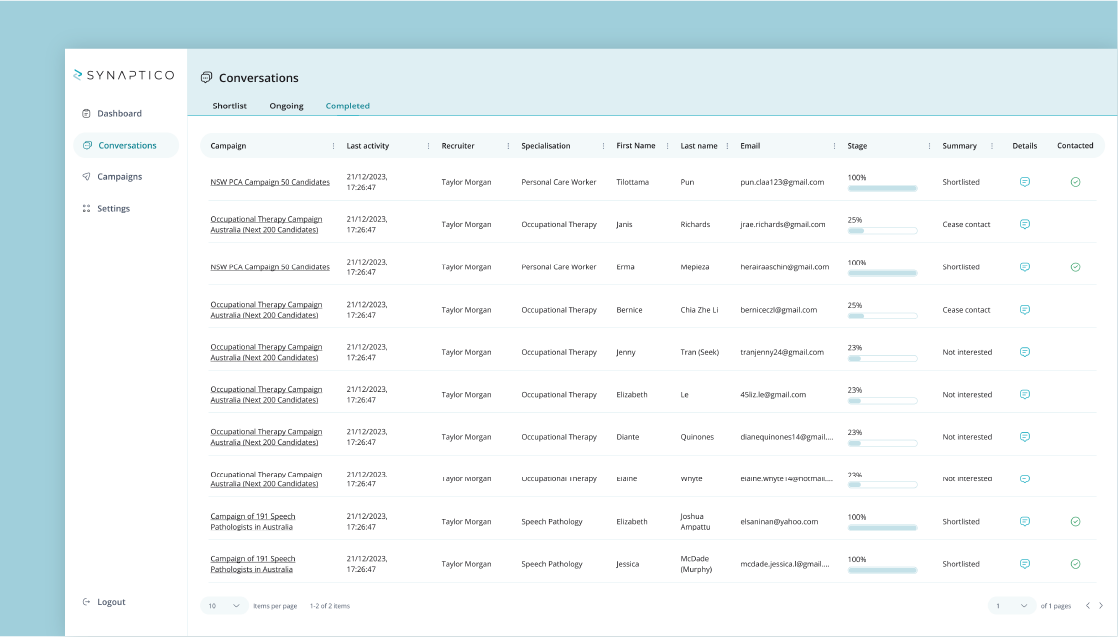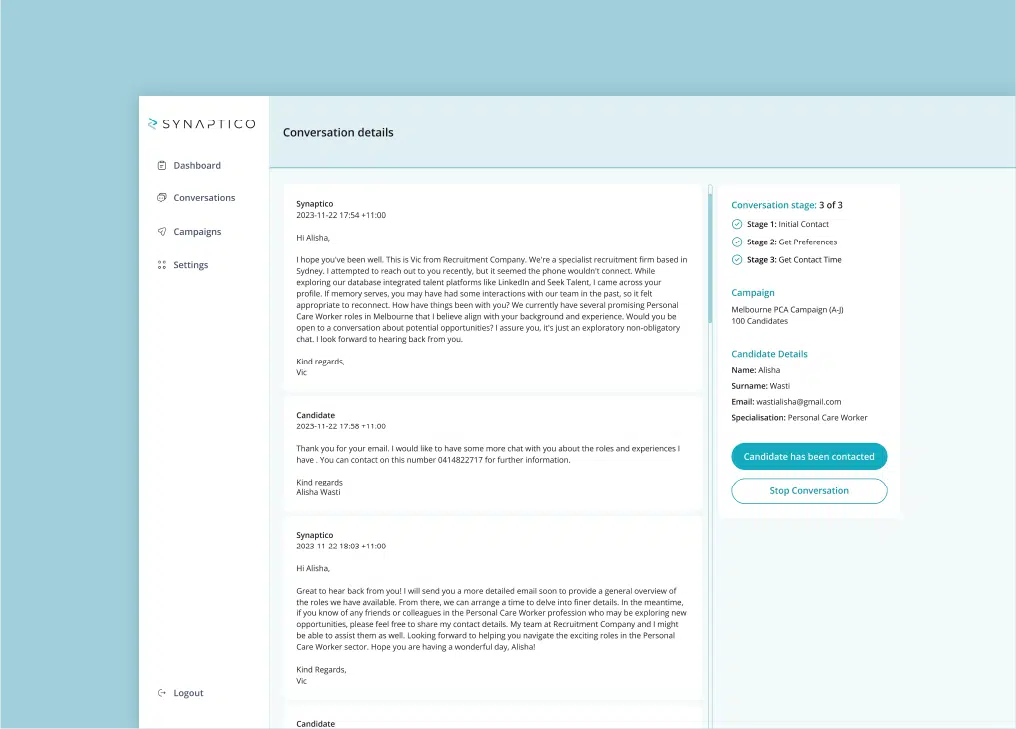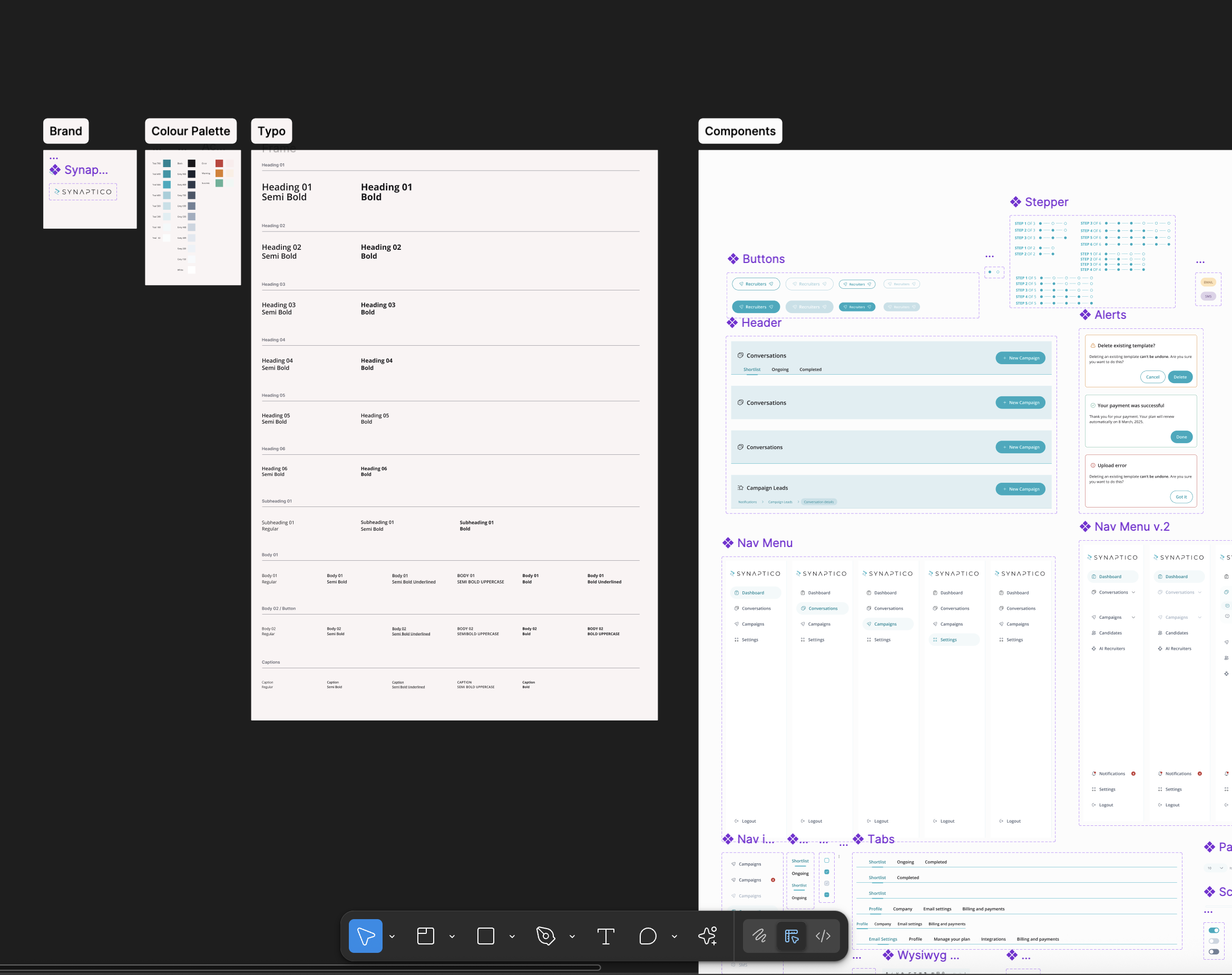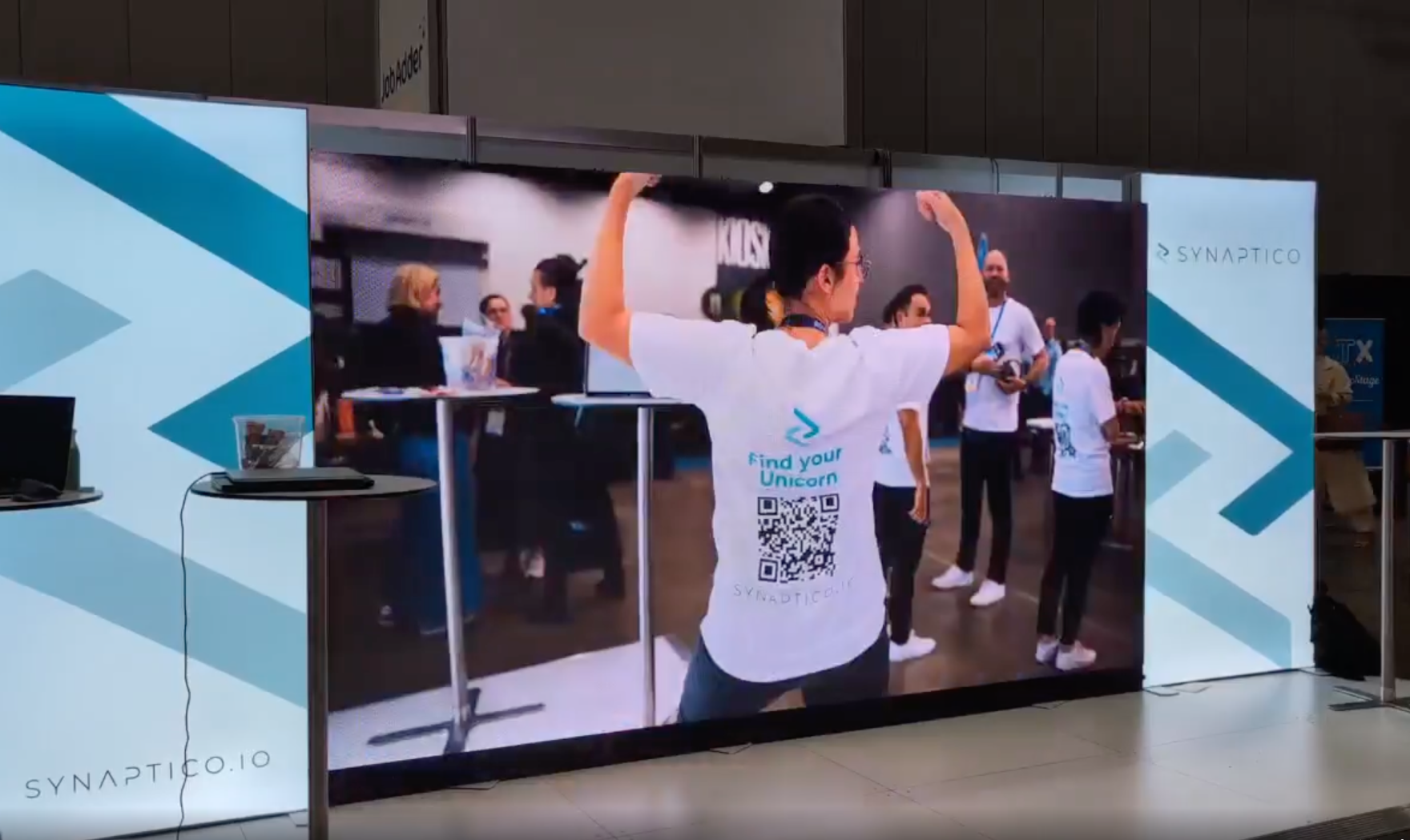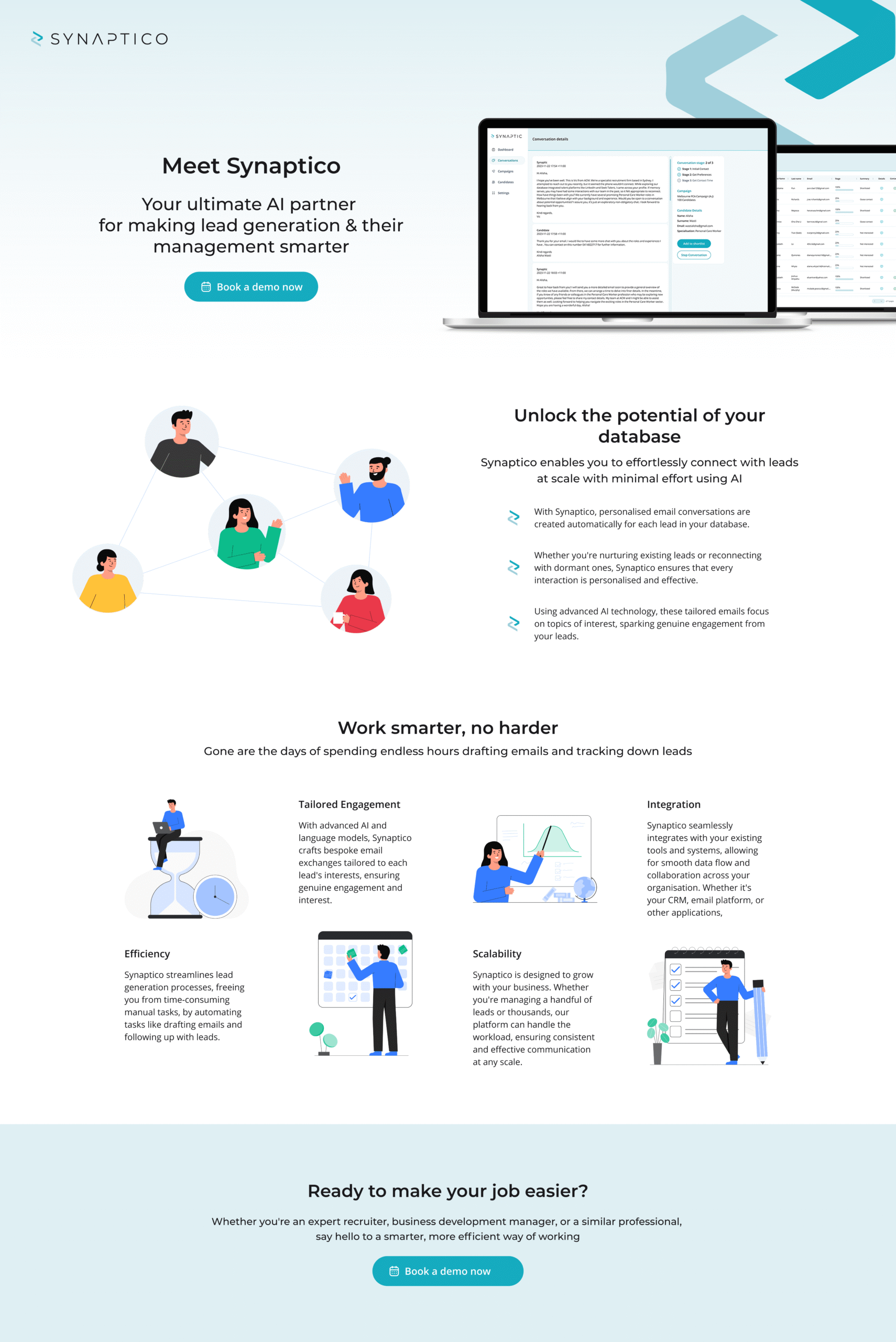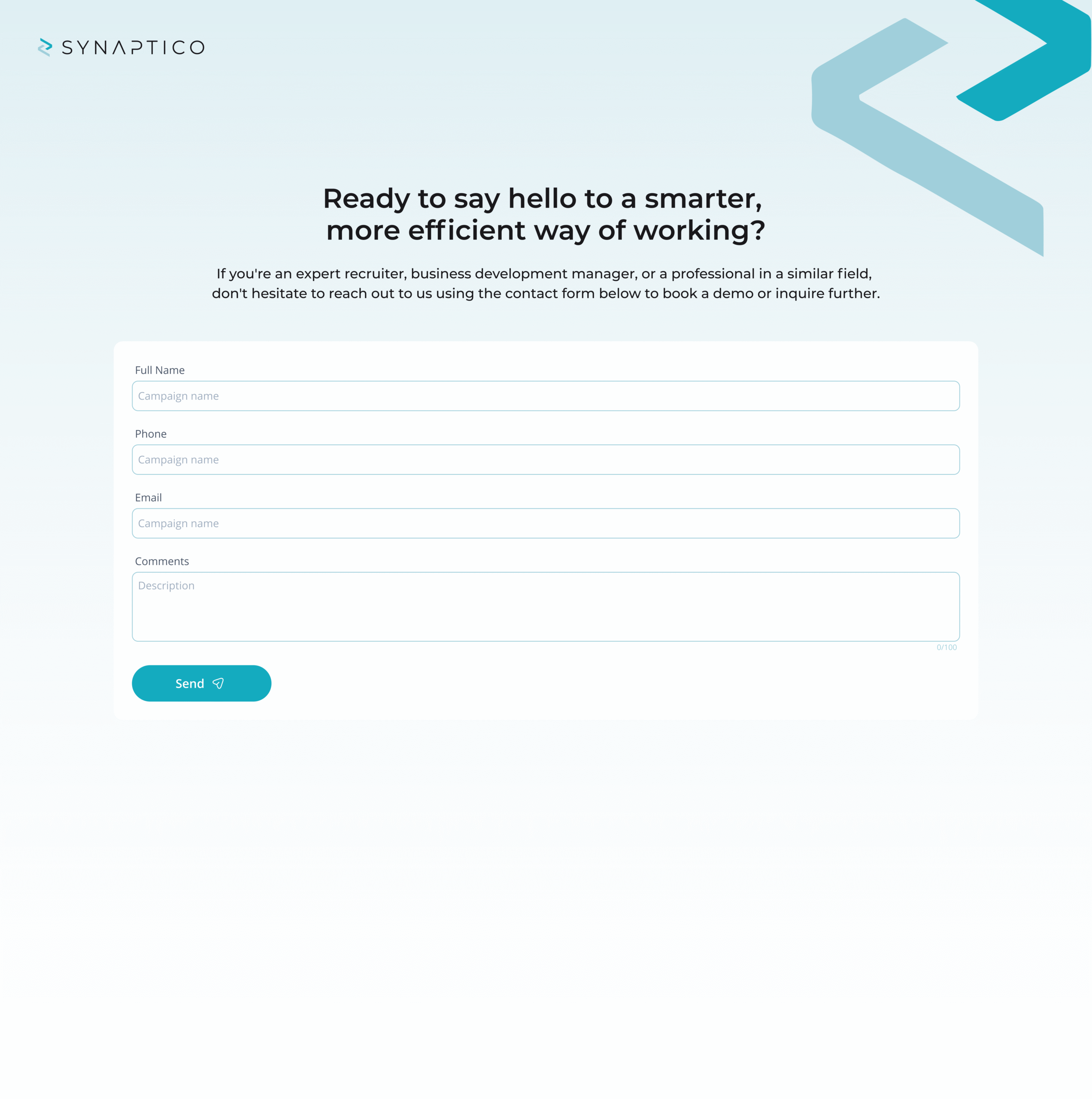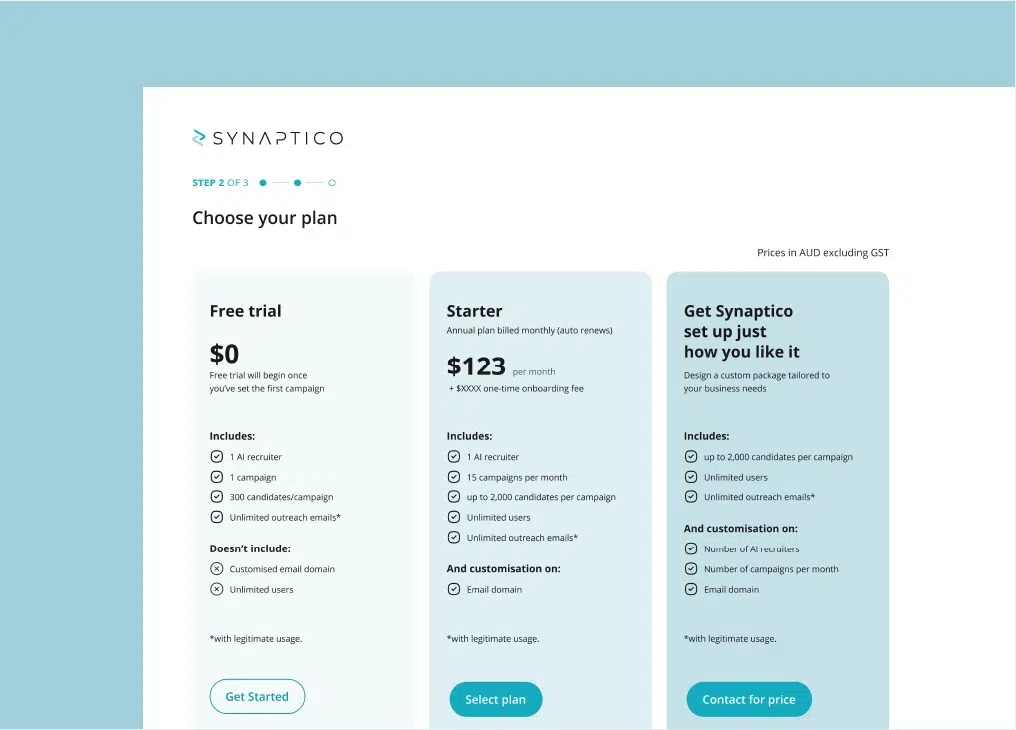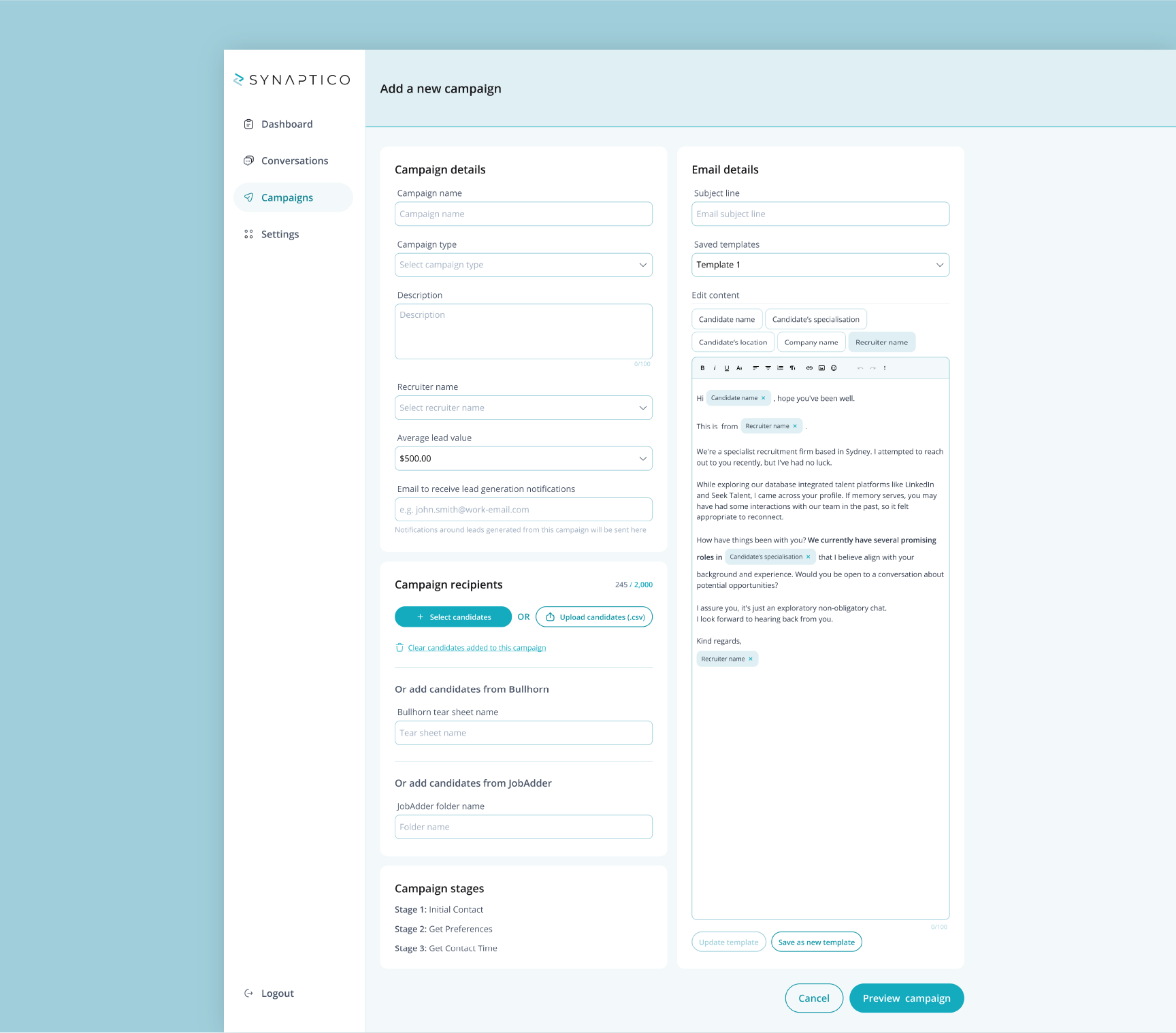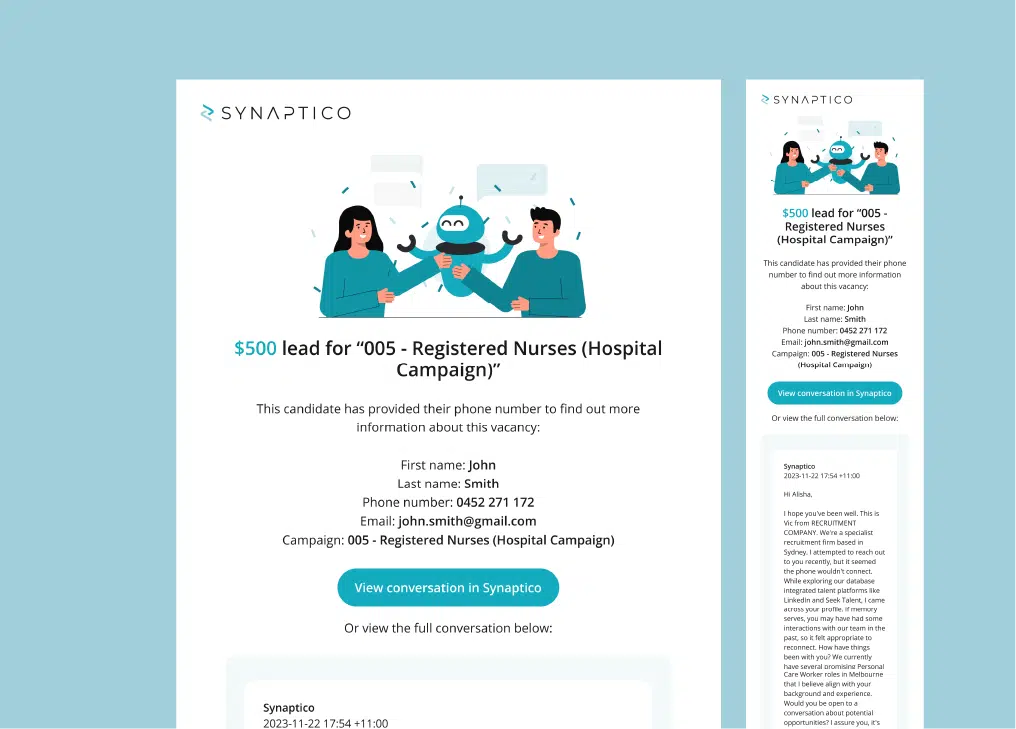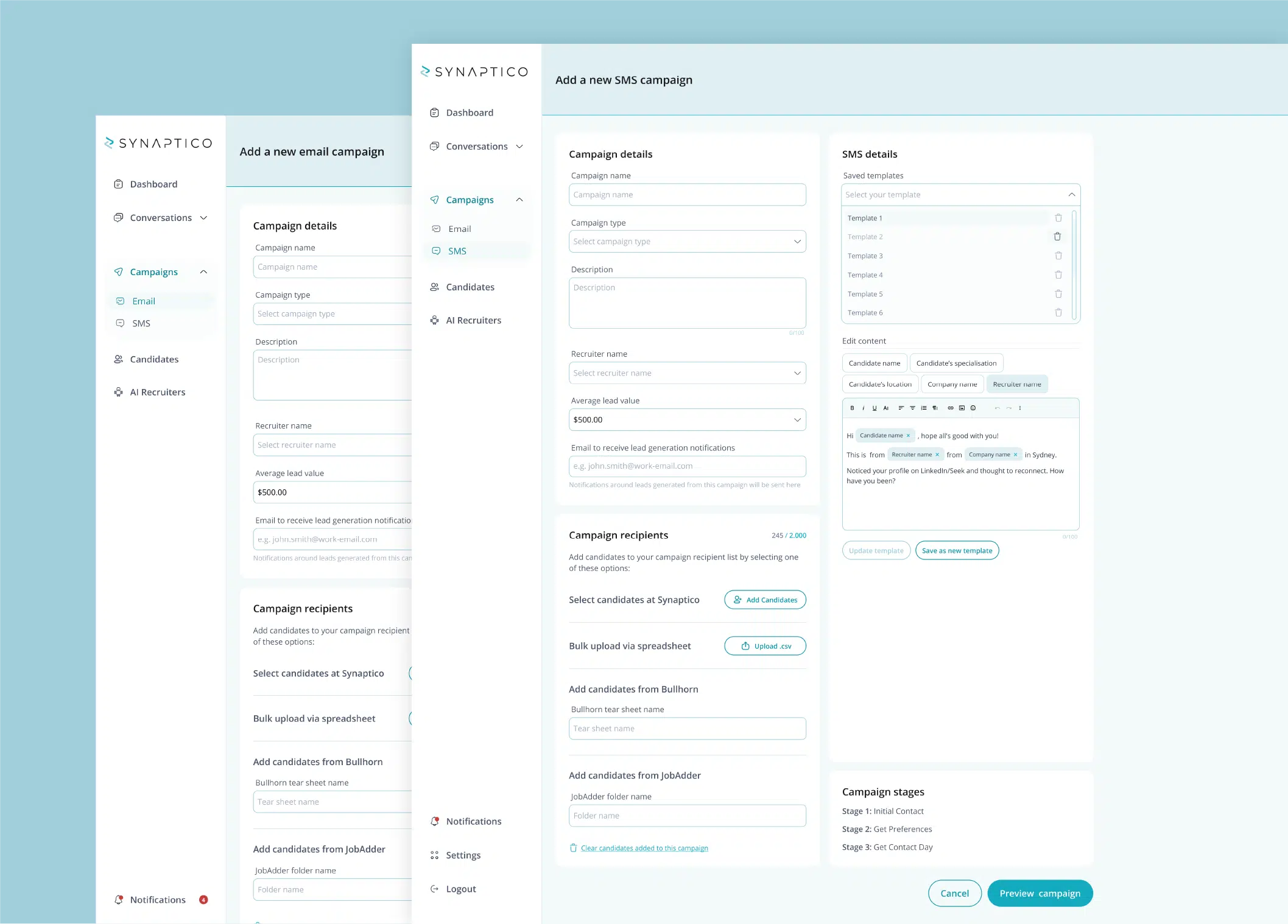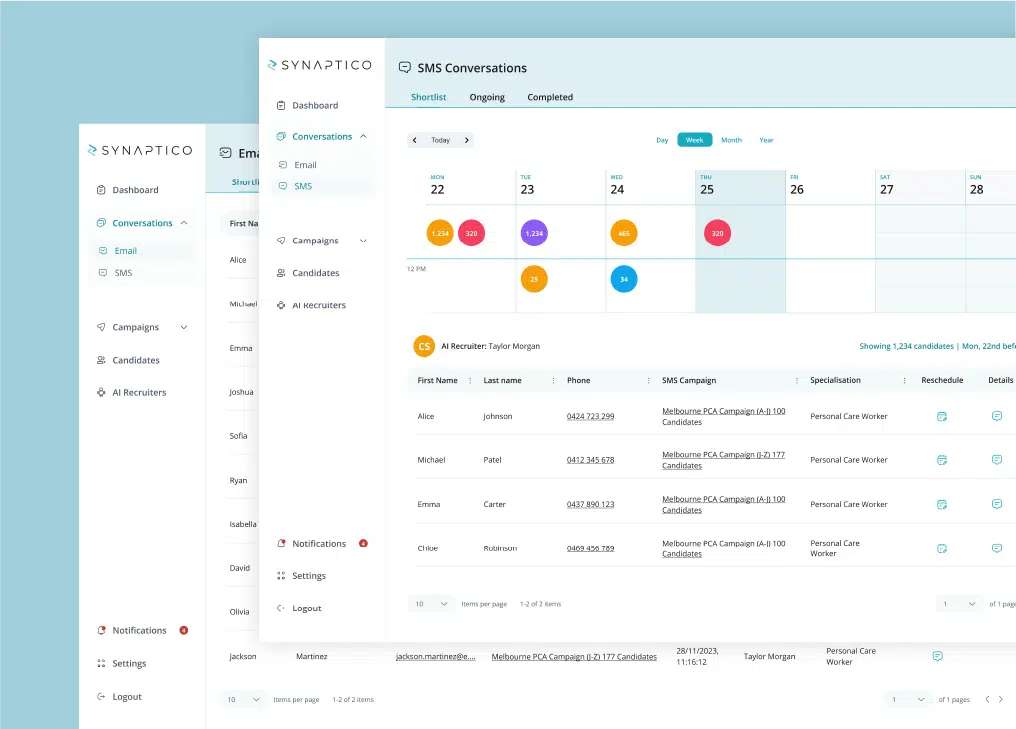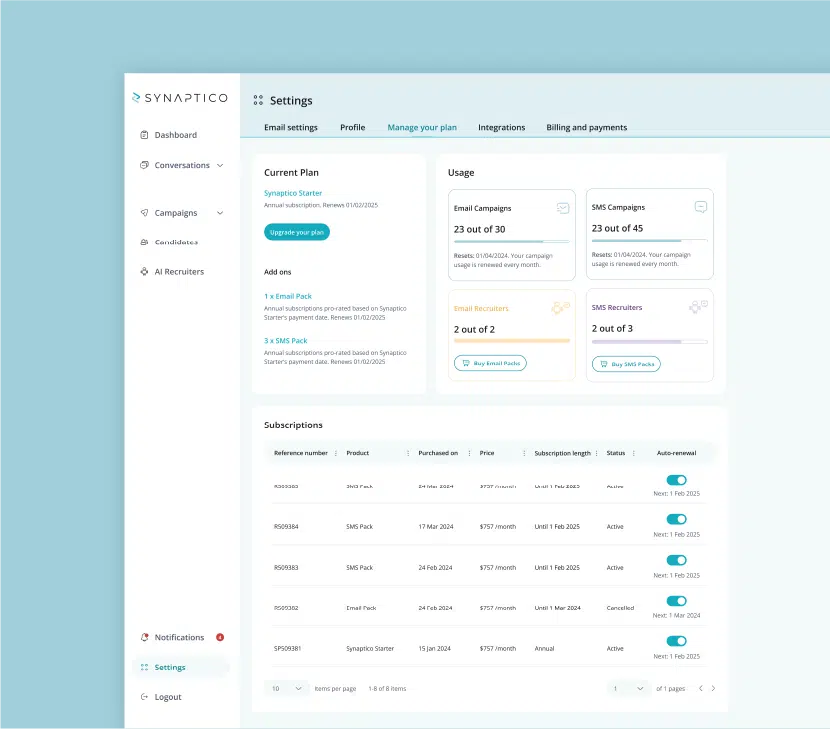End-to-end UX/UI Case Study
– Synaptico
Synaptico: From an early AI-powered MVP to a market-ready scalable SaaS Platform
Led the end-to-end UX/UI redesign of the MVP across 3 product versions, aligning recruiter needs with business goals — resulting in a 10× increase in qualified leads, 60% demo-to-deal conversion, and over $85K in early revenue.
Company
Helix Collective (Venture Studio)
Year (s)
2023 - 2024 | Sydney, Australia.
synaptico.io
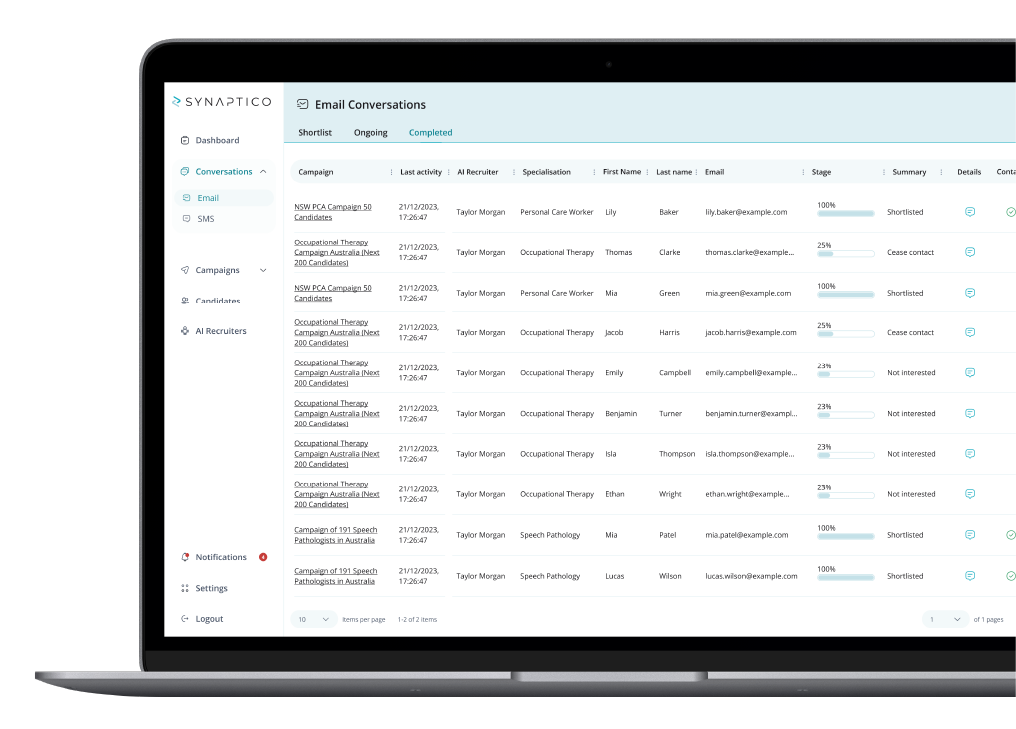
Overview
The Project
When I joined, Synaptico was an early MVP built by the engineering team to validate AI-powered outreach.
While the AI engine worked, the product lacked a usable interface, scalable architecture, recruiter workflows, onboarding, and monetisation paths.
To bring it to market as a SaaS product, the platform required a full UX/UI redesign aligned with both user needs and business growth.
What is Synaptico?
Synaptico is an AI-powered SaaS platform that helps recruiters automate high-volume candidate outreach via personalised email and SMS.
The platform integrates with ATS systems (JobAdder, Bullhorn) and simplifies recruiter workflows, helping generate qualified leads more efficiently.
Outcomes
10× growth in qualified leads per recruiter
70 qualified leads within 48 hours of campaign launch.
60% demo-to-deal conversion rate.
$85K+ in early revenue.
11+ recruitment firms engaged for full trials.
Scalable design system + full brand identity delivered.
My Role
As a UX/UI Designer, I worked closely with the Lead Designer, founders, and engineers to drive the full end-to-end product design lifecycle across three major versions — from early discovery to scalable delivery:
- User discovery — recruiter interviews, stakeholder workshops, journey mapping.
- UX strategy — defining key design goals aligned with business objectives.
- Information architecture — reorganising flows around recruiter tasks, not features.
- UI design— wireframes, prototypes, high-fidelity screens, and usability testing.
- Design systems— modular and scalable for rapid iteration.
- Brand identity— visual language and assets for go-to-market positioning.
Design Foundation
Understanding recruiters
Discovery: Understanding Users, Workflows & Frictions
The Real Problem
Recruiters were juggling disconnected tools — spreadsheets, email, LinkedIn, and ATS platforms — making outreach inefficient and hard to track. Personalisation was low. Follow-ups were manual. Reporting was non-existent.
Approach
To ensure the design addressed recruiter behaviours, workflows, needs, and business goals, I conducted:
- User interviews with recruiters and HR managers.
- Stakeholder workshops o align on product direction.
- MVP audit to identify friction and usability gaps.
- Competitive & market research to gather patterns from adjacent SaaS products.
Journey Mapping
I mapped the full recruiter journey from campaign planning to reporting. This revealed key friction points that became design opportunities. This grounded the product in real user behaviours, not assumptions.
| Stage | Pain Points | Strategic Opportunity |
|---|---|---|
| Plan Campaign | Manual, repetitive, time-consuming setup | Automate repetitive tasks |
| Write Message | No time for personalisation | Enable AI templating |
| Manage Conversations | No single source of truth | Build centralised “Conversation Hub” |
| Qualify & Report | No visibility on results | Deliver clear dashboards |
MVP Audit & Early UX Improvements
Information Architecture
I defined a new information architecture that organised features by task and simplified navigation—making key actions easier to find and reducing cognitive load.
Design Strategy
Aligning User Goals with Business Outcomes
Information Architecture
From research, I defined 5 design goals that would guide every iteration:
| Design Goal | UX Focus | UX Solution / Key Features Delivered | Released in |
|---|---|---|---|
| #1. Simplify Campaign Creation | Reduce setup time and manual errors. | Onboarding wizard, drag-and-drop builder, usage alerts, Email/SMS options. | V.1 → V.2 |
| #2. Centralise Candidate Sourcing | Integrate with ATS tools recruiters already use. | ATS integrations (JobAdder and Bullhorn) | V.2 |
| #3. Personalise Outreach at Scale | Enable dynamic, human-like messages. | AI recruiter profiles, dynamic templates, multi-channel support | V.1 + V.2 → V.3 |
| #4. Automate Repetitive Work | Free up recruiters’ time for strategic tasks. | Multi-channel campaigns, real-time email notifications for follow-up | V.1→ V.3 |
| #5. Provide Visibility & Control | Show clear engagement and campaign results | Campaign dashboard, Conversation Hub, Admin & Settings UI | V.1→ V.3 |
Product Evolution
Iterating Across 3 Key Versions
Synaptico Version 1
From MVP to Usable Product
Design Goals Addressed:
#1 Simplify Campaign Creation,
#3 Personalise Outreach,
#5 Provide Visibility & Reporting
Focus:
Recruiter Usability & Operational Foundation
Key Deliverables:
4 core user flows in Figma:
Dashboard, Conversations, Campaigns, and Settings
Defined visual direction
and delivered high-fidelity UI
Information Architecture
structured around recruiter tasks for intuitive navigation.
Built Campaign Builder v.1
CSV candidate upload and preconfigured templates.
Introduced Conversation Hub
to centralise and manage lead statuses (Shortlisted / Ongoing / Completed).
Added Dashboard with essential campaign performance metrics.
Established an Initial Scalable Design System for consistency and future growth.
Brand & Product launched
at TalentX Melbourne 2024
Synaptico Version 2
Onboarding, Monetisation & ATS Integration
Design Goals Addressed:
#1 Simplify Campaign Creation,
#2 Centralise Sourcing
#3 Personalise Outreach,
#5 Provide Visibility & Reporting
Focus:
Self-Service Onboarding, ATS Data Sync, Revenue Model Foundation
Key Deliverables:
Guided Onboarding Wizard
Introduced a step-by-step flow for DNS setup, AI recruiter configuration, and domain connection—enabling full self-service onboarding.
ATS Integrations (JobAdder, Bullhorn)
Enabled real-time candidate sourcing directly from recruiters' existing Applicant Tracking Systems.
Pricing Plans & Usage Limits
Embedded pricing tiers, usage limits, and upgrade paths directly within the UI.
Email Notifications
Enabled real-time alerts for lead generation, allowing recruiters to respond to opportunities faster.
Synaptico Version 3
Multi-Channel Outreach & Engagement
Design Goals Addressed:
#3 Personalise Outreach,
#4 Automate Repetitive Work,
#5 Provide Visibility & Reporting
Focus:
Self-Service Onboarding, ATS Data Sync, Revenue Model Foundation
Key Deliverables:
SMS Campaign Builder
Enabled full multi-channel outreach capabilities, allowing recruiters to manage email and SMS campaigns seamlessly.
Conversation Hub Split by Channel
Redesigned the Conversation Hub to offer distinct email and SMS views for easier navigation and faster follow-up.
Channel-Specific AI Recruiter Profiles
Introduced AI profiles linked to channels and pricing tiers, enhancing personalisation.
Real-Time Lead Engagement Notifications
Further improved notifications to help recruiters follow up even faster on hot leads.
Expanded Admin & Settings
Added dedicated sections for billing, integrations, and usage tracking—improving administrative control.
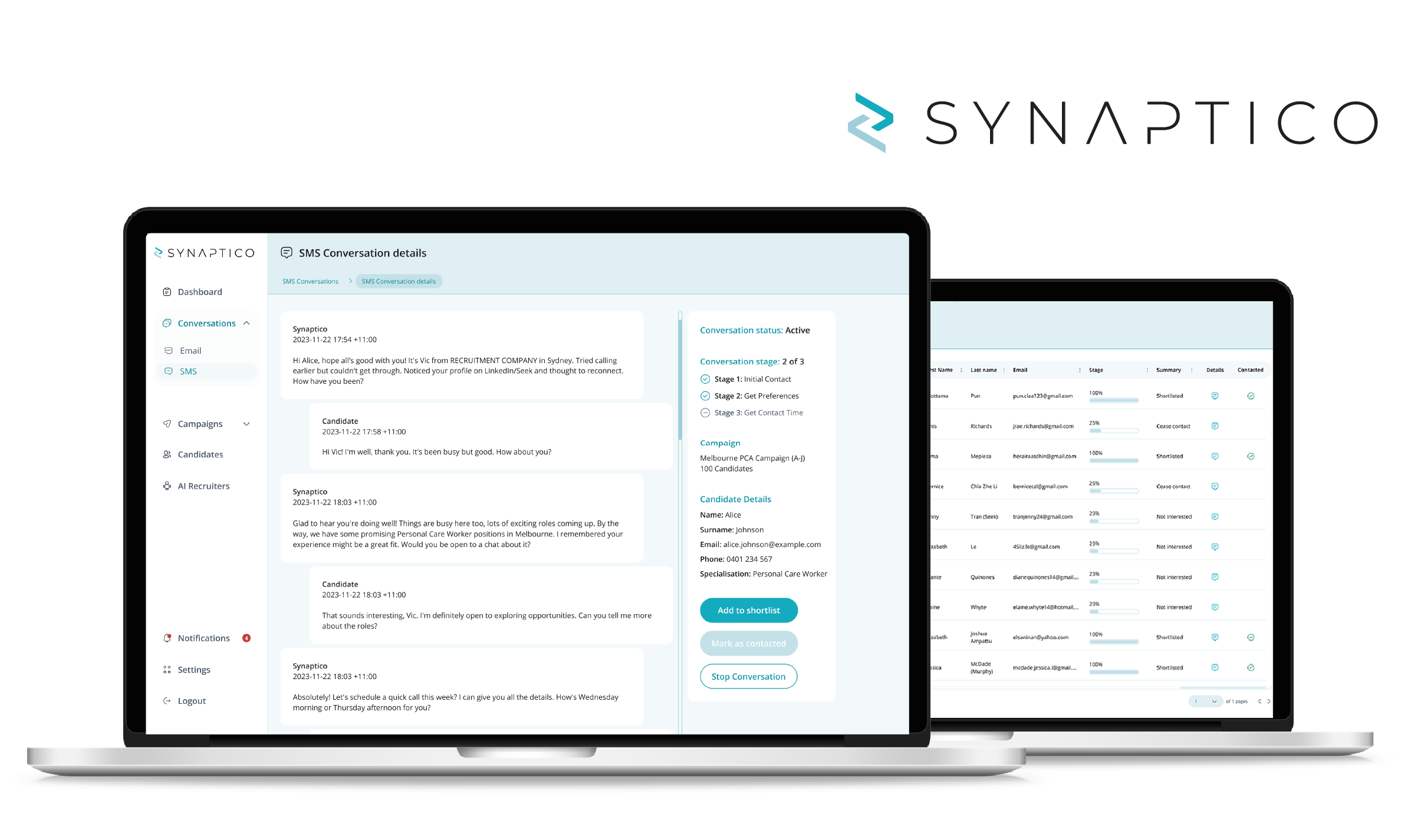
Key Takeways
Working on Synaptico reinforced the importance of aligning UX decisions with both product strategy and business growth.
Operating in a fast-paced startup environment required end-to-end ownership — from discovery to delivery — while adapting quickly to shifting priorities and tight feedback loops.
Designing across multiple product versions taught me how to balance recruiter needs with scalability, pricing models, and self-service adoption.
Collaborating closely with cross-functional teams helped ensure that design not only improved usability, but directly supported monetisation, customer acquisition, and platform expansion.
Impact
From technical MVP to scalable SaaS platform
10x increase in leads per recruiter for the first client.
11+ recruitment firms engaged for full trials, providing valuable insights.
70 qualified leads within 48 hours of launching a campaign.
60% demo-to-deal conversion.
$85K+ in early revenue generated.
Full product UI system & scalable design foundation delivered.
Established a strong brand identity, building trust in a competitive market.
